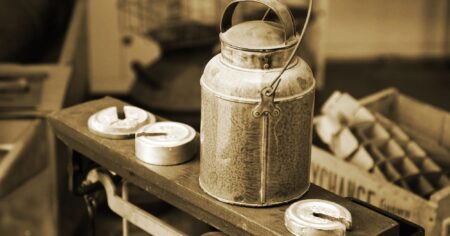Planting windows are narrow, so it’s important to hit the ground running by ensuring that you take care of all maintenance points — tires included.
Tire failure during planting can be frustrating and costly. Firestone estimates that each hour a flat tire keeps a farmer from planting, it could cost the farm nearly $2,500.
Inspection Points
To begin the inspection, bring the tractor and planter into the shop and park on a concrete pad, so you can do a full walk-around.
Check the tractor tires’ air pressure; the weight of heavy farm equipment can damage underinflated tires. Overinflating tires leaves them with less ground contact surface area, causing more slippage and soil compaction.
Look out for any cracks, cuts, and exposed cords by carefully running your hand along the sidewall. Deeper cracks could cause further damage while driving through stubble, and make the tires more susceptible to failure.
“There are a few situations in which you absolutely need to replace an R-1 or R-1W tire immediately — if you see an oblong bulge that indicates a rupture in the casing, or if excessive wear has exposed belt wires or ply fabric,” said Blaine Cox, national product manager for agriculture, golf, and turf at Yokohama Off-Highway Tires. “Those conditions are unsafe, and must be addressed at once.”
Look over tread depth as well. Soil types and moisture content impact how effective tires remain when they start wearing down, and replacement timing may vary, said Dave Paulk, field technical services manager at BKT Tires. Generally, agricultural tire slippage should range from 8%–15%.
“If there’s only about 20% tread left on there, that doesn’t mean [the tires are] completely worn out, but you start losing traction and get more spin out of them than you should,” Paulk said.
Also look at valve stems to make sure they aren’t leaking and the valve core is free of debris. Check to see that each valve stem has a cap, to keep mud from getting in and around the core.
Finally, make sure wheel lug bolts are tight. You don’t want loose wheels wobbling around on you, Paulk said.
Take time to run a similar check on the planter’s tires. Tires are an oft-ignored planter component — until they go flat. Underinflated tires affect how well row units can maintain precise depth placement, and they can jeopardize level planter operation. Proper inflation keeps the toolbar level and keeps drive tires turning at the same speed.
Tractor Setup
In advance of planting season, Brad Harris, manager of Global Agricultural Field Engineering at Firestone Ag, said to consider how your planter setup could cause compaction.
“A lot of farmers put various types of row cleaners and fertilizer systems on planters or tanks on tractors to carry starter fertilizers,” Harris said. “But every time you start adding that extra weight, you need more inflation pressure in the tires to carry that load.”
While it may seem a good idea to put 3,000 gallons of fertilizer on the side of the tractor in saddle tanks, it may be better to pull a cart behind the planter. That setup carries the liquid fertilizer without overloading the tires on the tractor and minimizes the amount of soil compaction, Harris said.
Adjusting psi for the heaviest axle load is one way farmers can reduce compaction, said Ken Brodbeck, vice president of technology for Precision Inflation.
“It’s important to set the pressure for what you are doing,” Brodbeck said. The ideal might be 14 psi for the tractor tires on a field’s soil type, but if you are pulling a planter several miles on a road, the pressure needs to be about 30 psi to prevent tire damage during transport.
Pay attention to the wheel slippage monitor on your tractor’s GPS. Ideally, your tractor should be in the 8%–12% range; if it’s 2%–4%, remove wheel weights. The general rule is to lighten up for planting, and put the weights back on for fall tillage.



:max_bytes(150000):strip_icc()/Jeep-ad-102708233-3e0f50f06d444c87ac72b74df5075e59.jpg)
:max_bytes(150000):strip_icc()/JerryNelsonsyearbookseniorphoto-efdb3a1035f44d03b269864b12daf529.jpeg)


:max_bytes(150000):strip_icc()/7021194tireclose-up-9b12e41020764610ae5ca5fc0c709b71.jpg)

:max_bytes(150000):strip_icc()/storm20clouds2028947481428_944ef3a1a8_c-2-65d8855aa1cd40158d16c23df590dae4.jpg)
:max_bytes(150000):strip_icc()/wheat-dramatic-up-85fc4828d4b4487d8190df3ac9823c65.jpeg)
:max_bytes(150000):strip_icc()/54430087146_c8b758a0f3_o-32dbb69e796a407db0bfbe33559b189b.jpg)